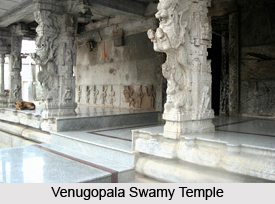 Venugopala Swamy Temple is located in Karnataka. It is popular for its religious significance and architecture. This temple stands as an example of Hoysala architecture in Karnataka. It was built in the 12th century AD in the early phase of medieval India. Before the Krishna Raja Sagara Dam Project was conceived by M.Visvesvaraya in 1909, the temple complex of Venugopala Swamy Temple was located in the village of Kannambadi.
Venugopala Swamy Temple is located in Karnataka. It is popular for its religious significance and architecture. This temple stands as an example of Hoysala architecture in Karnataka. It was built in the 12th century AD in the early phase of medieval India. Before the Krishna Raja Sagara Dam Project was conceived by M.Visvesvaraya in 1909, the temple complex of Venugopala Swamy Temple was located in the village of Kannambadi.
History of Venugopala Swamy Temple
When the KRS dam or Krishna Raja Sagara Dam Project was conceived in 1909, the temple was condemned for submersion. By 1930, the entire erstwhile village of Kannambadi was completely buried under the water. However, Venugopala Swamy Temple would resurface whenever the water levels in the reservoir dropped, typically during drought years. This was most evident around the year 2000. In the year 2011, Venugopala Swamy Temple was restored completely and now this place is serving as the pilgrimage tourism site in Karnataka.
Structure of Venugopala Swamy Temple
The temple complex of Venugopala Swamy includes the main temple of Venugopala Swamy and two other temples, namely Kenneshwara temple and Kalamma temple. Kenneshwara (Ishwara) temple and Kalamma (a local deity) temple are the two temples covered with the architectural designs from Hoysala Empire. These two temples are placed abandoned. By 1930, the first phase of the dam was completed and all three temples were submerged. The original temple complex of Venugopala Swamy was massive. Venugopala Swamy Temple covers an area of around 50 acres.
The complex of Venugopala Swamy Temple in Karnataka is a symmetrical building enclosed by two `prakaras` and the outer gate (Mahadwara) have verandahs on both sides, flanked by the yagasala and the kitchen. This is enclosed by the second mahadwara, which led to the inner enclosure and was akin to the Somanathapura temple of Mysore district of Karnataka.
This article is a stub. You can enrich by adding more information to it. Send your Write Up to content@indianetzone.com.











